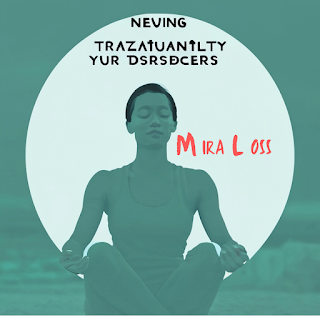Understanding and Managing Anxiety Disorders: A Comprehensive Guide
Anxiety disorders stand out as one of the most common and significant problems impacting people worldwide in the complicated field of mental health. With 301 million individuals suffering from anxiety disorders in 2019, it's critical to examine the complexities of these conditions, comprehend how they present, and investigate practical approaches to diagnosis and therapy.
The Widespread Effects of Anxiety Disorders
Worldwide Effect
Anxiety disorders impact people everywhere; they are not limited by geographic boundaries. Anxiety problems were reported to affect 4% of people worldwide in 2019 alone. Notably, anxiety disorders are more common in women than in men, indicating that they are not gender-neutral.
Duration and Onset
Anxiety disorder symptoms frequently appear in infancy or adolescence and persist throughout maturity. These widespread conditions, which are characterized by extreme and overwhelming fear, have a substantial negative influence on a number of facets of daily life, such as relationships with family, friends, and work.
Types of Anxiety Conditions
Recognizing the various ways in which anxiety disorders manifest is necessary to understanding them.
1. Anxiety distraction (generalized):
GAD is defined by excessive and unrelenting concern over everyday tasks or occurrences. People whitethorn become caught in a loop of bedevilment thoughts that negatively impact their general wellbeing.
2. Depression:
Panic disorder is a crippling, undefined condition characterized by affright episodes and the vexation of them happening again. Avoiding undefined triggers that are thought to be triggers becomes a typical coping technique.
3. Disorder of mixer Anxiety:
The hallmark of social anxiety is extreme fear and worry about social situations. The social life of an individual can be greatly constrained by their fear of rejection or disgrace.
4. Fear of spiders:
Agoraphobia is the excessive fear of or dodging of situations that could make one feel imprisoned or panicked. This dread may get a John Roy Major restriction on day-to-day activity.
5. Anxiety related to divorce:
Strong emotional ties might lead to unreasonable stress or a fear of being parted from important people. This is especially important for youth.
6. Specific Phobias:
Severe, undue phobias of particular things or circumstances put up cause avoidance behaviors as well as an important deal of distress.
7. Mutism with Selection:
Selective mutism, which largely affects youngsters, is characterized by a persistent incapacity to communicate in some social contexts, even while I feel at ease with others.
Preventive measures and Contributing Factors
Complex Factor Interaction
A complex interaction of biological, psychological, and social undefined leads to anxiety disorders. While anyone may be vulnerable, individuals who have suffered abuse, significant losses, or unfavourable undefined have a greater chance.
family relationship Between Physical Health
Physical health and anxiety disorders are strongly related, with anxiety's effects acting as risk factors for diseases like cardiovascular disease. Handling these conditions calls for a comprehensive strategy that takes worry of one's natural science and emotional health.
Preventive Techniques
Parental education, school initiatives that subscribe children's social and emotional growth, and adult seaworthiness regimens are examples of community-based preventative strategies. The goal of these programs is to increase resilience and constructive coping strategies.
Methods of Diagnosis and Treatment
Getting Help
Effective management of anxiety begins with the recognition of its symptoms. It is advised that those who exhibit signs of anxiousness get expert assistance.
Psychological Guidance
Many anxiety disorders can be effectively treated with talk therapy, especially when it incorporates the concepts of cognitive-behavioral therapy (CBT). One type of CBT that assists people in facing and overcoming their fears is exposure therapy.
Considerations for Medication
Adult anxiety problems can be effectively treated with antidepressant drugs such selective serotonin reuptake inhibitors (SSRIs). Nonetheless, consideration should be given to both possible negative effects and personal preferences when selecting an intervention.
The Importance of Self-Care
Holistic Well-Being An important part of controlling anxiety is self-care. Among the strategies are abstaining from alcohol and illegal drugs, exercising frequently, adhering to a regular schedule for eating and sleeping, and utilizing relaxing methods like mindfulness meditation.
WHO's Comprehensive Action Plan for Mental Health
International Projects
The World Health Organization's (WHO) 2013–2030 Comprehensive Mental Health Action Plan highlights the significance of treating anxiety disorders. The strategy promotes treatments that are available to everyone, including those given by healthcare professionals who are not specialists.
Manuals for Psychological Intervention
The World Health Organization has created psychological intervention manuals that integrate cognitive-behavioral therapy concepts, such as Problem Management Plus (PM+) and Self-Help Plus (SH+). These tools enable people to control their stress, anxiety, and depression on an individual and group level.
Closing
Understanding the many a forms that anxiousness disorders can take, identifying the variables that put up to them, and adopting all-encompassing methods to therapy and prevention are critical while traversing the undefined terrain of anxiety disorders. We can completely work conjointly to create a smart set where anxiety disorders are treated with compassion, understanding, and realistic solutions by raising awareness, supporting early intervention, and advancing holistic well-being.



.png)



.jpg)